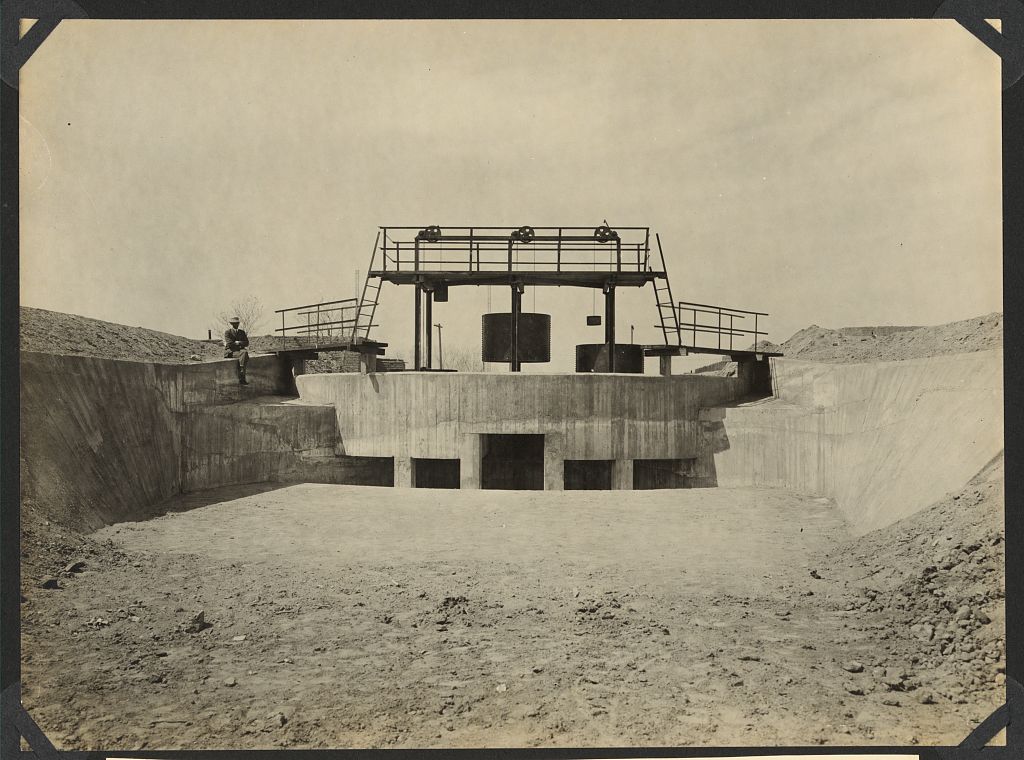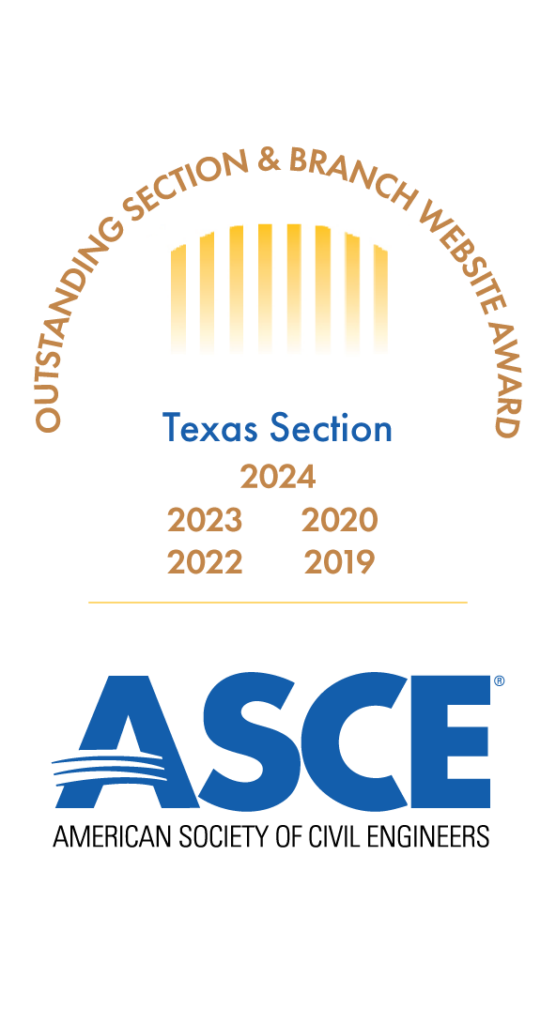Franklin Canal in El Paso, Texas; ASCE Texas Section Civil Engineering Landmark
Author: Melinda Luna, PE, CFM, F. ASCE
November 2024

The Franklin Canal was designated an ASCE Texas Section Civil Engineering landmark in 1976. The Franklin Canal was inventoried for the Historic American Engineering Record (HAER) as part of the Southwest Water Resources Project, a joint project with the Texas Tech Water Resources Center. The survey was published as Water for the Southwest: Historical Survey and Guide to Historic Sites by the American Society of Civil Engineers in September 1973.
To get a national Civil engineering Landmark Designation, you must have documentation on how the landmark is significant. The Franklin Canal has significance for two reasons. Over a century, the canal has supplied a major volume of irrigation water to agricultural users in El Paso and to the eastern parts of the county. It was a successful irrigation project after many failed attempts over decades. The second significance of the Franklin canal is that the canal represents a more extensive joint irrigation project as mandated by the International Treaty of 1906-1907 between the United States and the Republic of Mexico.
The Franklin Canal’s significance as an irrigation facility dates back to the mid-19th century. Residents of the area on both sides of the Rio Grande attempted to improve irrigation facilities with dams on the river in the early 1800s. However, these all attempts were unsuccessful with periodic flooding destroying the dams. In 1889, the Franklin Canal provided some partial success on the U.S. side without a dam. The Texas and Pacific Railroad had acquired the corridor of land that the canal followed beginning in 1880. The railroad found that it had a broader corridor than it needed for its tracks in El Paso proper, so it sold the more southerly part of the corridor to the City of El Paso which allowed right-of-way to the canal company. The railroad eventually chose to run the tracks on a more northerly route and sold an alternate route that it had purchased. This alternate route became a part of the canal right of way. The city eventually picked up legal title to the lands that became the canal before granting usage rights and a fifty-year franchise to the El Paso Irrigation Company, a private entity formed to develop the canal and other irrigation facilities in the area.
Initial construction occurred from 1889 to 1891 when the canal became fully operational throughout its length. A.J. McQuaid of Pueblo, Colorado, bought the company in 1890 and continued with the construction and eventual operation of the canal. The 1900 El Paso City Directory lists it as named the Franklin Irrigation Company as reorganized under that name in 1898. The name of the canal is assumed to have been from the nearby Franklin Mountains, selected as many businesses select a local geographic name. There had been a movement to rename the city of El Paso as “Franklin” during the 1880s but the change, obviously, never occurred. The Franklin name proved to be long-lasting in the local area. In 1909 another group, the El Paso Water Users, bought the canal. Under private ownership, the canal supplied many agricultural users until 1913 when the owners sold it to the federal government’s Reclamation Service (now the Bureau of Reclamation). Drought years during which little water could be supplied caused the venture to prove unprofitable for investors though it did aid agriculture in the area.
Most of Texas was in a drought from 1909 to 1912. Before the construction of the Mexican Diversion Dam in 1907, the Franklin Canal simply drew water directly from the Rio Grande, a method with much less control of flow than provided by the use of a diversion dam. With the greater capacity after the diversion dam was built, the U.S. Reclamation Service purchased the canal in 1913 and upgraded it in 1914-1916. The All-American Canal and American Diversion Dam also depended on the location of the Franklin Canal which has its officially designated head at the same location as when first constructed. The importance of the canal is readily evident in the vegetation and usage of the lands for farming in areas supplied with irrigation water by the canal in contrast to those lacking irrigation nearby which have only scrubby native vegetation. The Reclamation Service purchased the canal for $125,994.09(4 million in 2024 dollars) in 1913, then conducted the major upgrade for $263,000($8,461,649.30 in 2024 dollars), a project which employed 681 work animals and 1200 men(the population of El Paso was 40,000) in March 1914.
1 United States Bureau Of Reclamation. (1914) Newly designed canal structure in Franklin Canal, El Paso Valley – counterbalanced cylinder gates. Texas, 1914. April. [Photograph] Retrieved from the Library of Congress, https://www.loc.gov/item/2008676786/.


